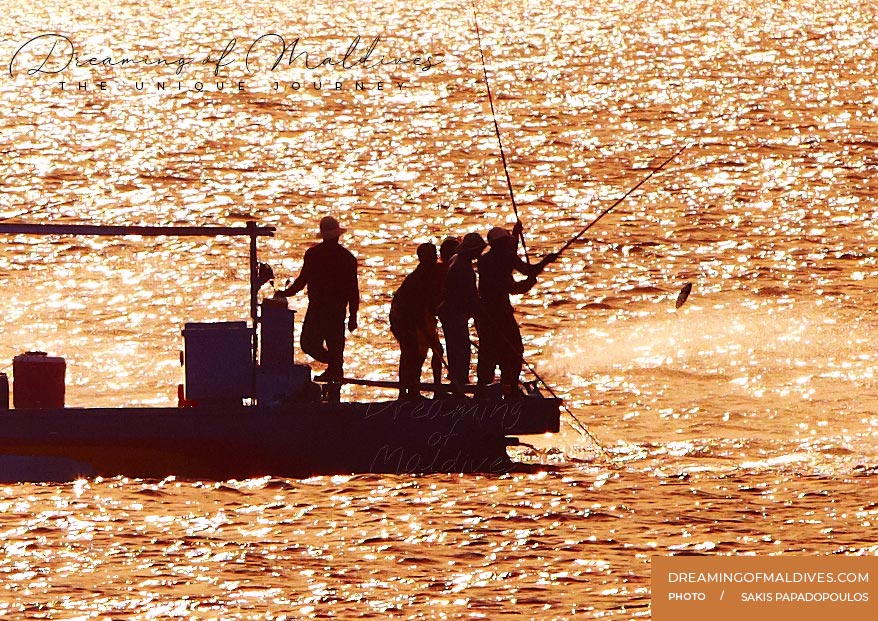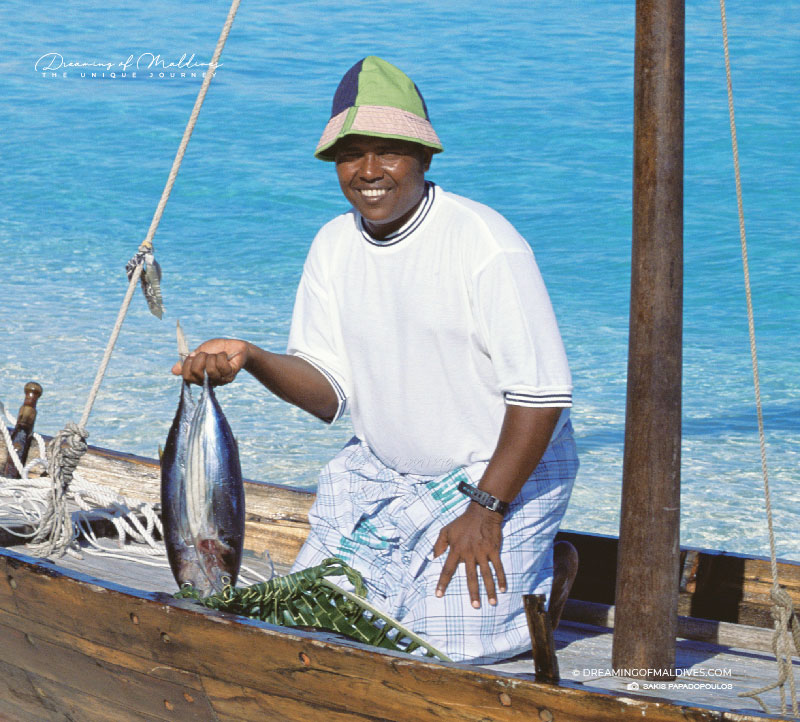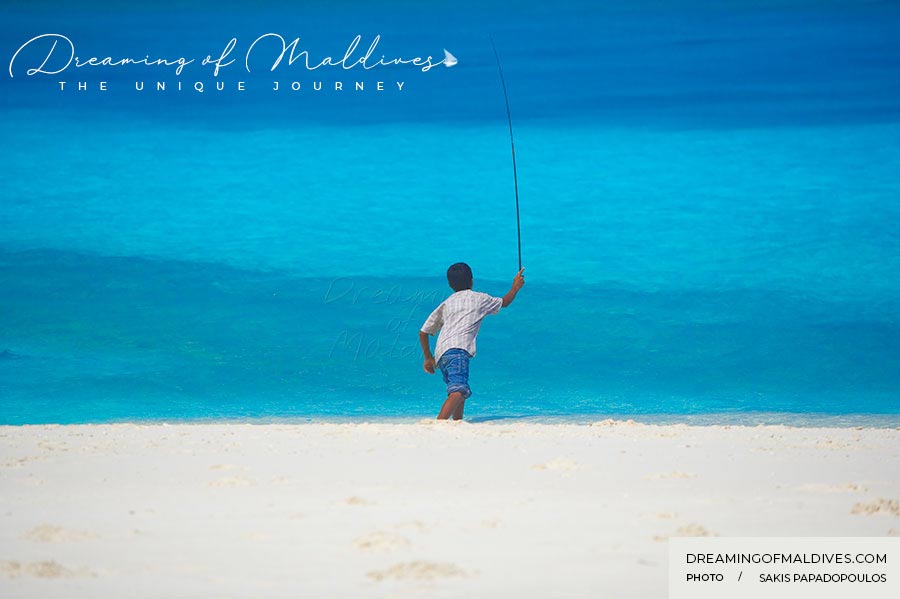Maldives traditional fishing is more than a livelihood — it’s a cultural rhythm, a way of life that connects island communities to the ocean with skill, respect, and deep-rooted pride.
Across the archipelago, from the capital’s busy harbor to the quiet shores of remote islands, the story of Maldivian fishing unfolds in many forms. Maldives traditional fishing is more than a way to feed a nation, it’s a living tradition rooted in centuries of craftsmanship, community, and deep respect for the ocean.
All photos featured in this article were taken by us during our multiple journeys from north to south of the archipelago.
Fishing A Daily Tradition of the Maldives
In the Maldives, traditional fishing is more than a means of sustenance—it’s a reflection of the nation’s heritage and deep connection to the sea. Among the various methods practiced, pole-and-line fishing stands out as a time-honored technique that continues to play a vital role in both the economy and cultural identity of the Maldivian people.
The Pole-and-Line Method : Sustainable and Selective
This method ensures that juvenile fish and non-target species stay unharmed. It is one of the most sustainable fishing practices in the world.
Pole-and-line fishing is the Maldives largest source of fishing.
It involves catching fish individually using a single hook attached to a pole, typically made of bamboo or modern materials.
Fishermen use live bait to attract schools of tuna near the surface. Then, in one swift, powerful motion, a fish is hooked and flung onto the deck — no nets, no bycatch, and no harm to the reef.
This method ensures that juvenile fish and non-target species are largely unharmed, preserving marine biodiversity. The technique has been practiced in the Maldives for centuries and is considered one of the most sustainable fishing practices in the world.
It’s selective, efficient, and deeply respectful of the marine ecosystem — ensuring that the Maldives’ greatest natural asset, the ocean, remains healthy for future generations.
Traditional pole and line tuna fishing in Maldives onboard of a Maldivian dhoni. An ancestral method that respects the marine life.

From Island Shores to Male’s harbour Docks : A Daily Ritual
In Malé, fishing boats line the harbor (Photo 1), a symbol of the country’s enduring reliance on the sea. Every morning, fishermen set out in dhonis, like the one in Photo 2 — a wooden boat typical of the Maldives.
In the capital Male, rows of dhonis and fishing boats dock at the harbor beneath the golden dome of the Grand Friday Mosque. These vessels are the backbone of Maldivian daily life — a striking image of modern livelihood built on ancient tradition.

Back at Male’s main harbor, the day’s catch arrives. Tuna is lifted one by one from the boats by hand — a tradition unchanged for decades. These fish will quickly make their way to local markets and households. For many Maldivians, this moment is a ritual.

Just steps from the harbor, the Male Fish Market is where the story of Maldives traditional fishing comes full circle. As boats arrive with the day’s catch, locals gather to buy fresh skipjack, yellowfin tuna, and reef fish still glistening from the sea. The market buzzes with energy and the voices of fishermen negotiating with vendors.
There are no cold displays here, just a raw, authentic atmosphere.
The day’s catch — hundreds of freshly caught tuna and reef fish — is carefully laid out on the tiled floor in neat rows. Fishermen, vendors, and locals crowd the space, inspecting the fish, negotiating prices, and exchanging stories.

Fishing on small Maldivian local islands
On smaller inhabited islands across the Maldives, fishing is still a manual art. Here, a local fisherman proudly displays a freshly caught skipjack tuna, the Maldives’ most commonly caught fish. He’s standing in a small handcrafted dhoni, wearing a mundu (traditional sarong) — a sight that symbolizes the authenticity of island life.
Smiling with pride, a fisherman holds a freshly caught tuna, the Maldives’ most iconic fish.

Passing the Rod : A Tradition for the Future
On the edge of a turquoise lagoon, a young Maldivian boy casts a simple line into the sea. For many young islanders, fishing begins this way : playful at first, then purposeful, and eventually, for some, a lifelong calling.
This image reflects what Maldives traditional fishing is truly about : not only feeding a nation but preserving a living culture, where the sea is teacher and a provider.
Young Maldivian line fishing on his island.

maldives culture & traditions /
Follow us on Facebook, Youtube and Instagram
for more Maldives Dreams & Stories
Your TOP Best Maldives Resorts 2026YOUR CHOICE. YOUR DREAM. YOUR VOICE
[ Official ]
Traveler’s Choice
15th Edition



